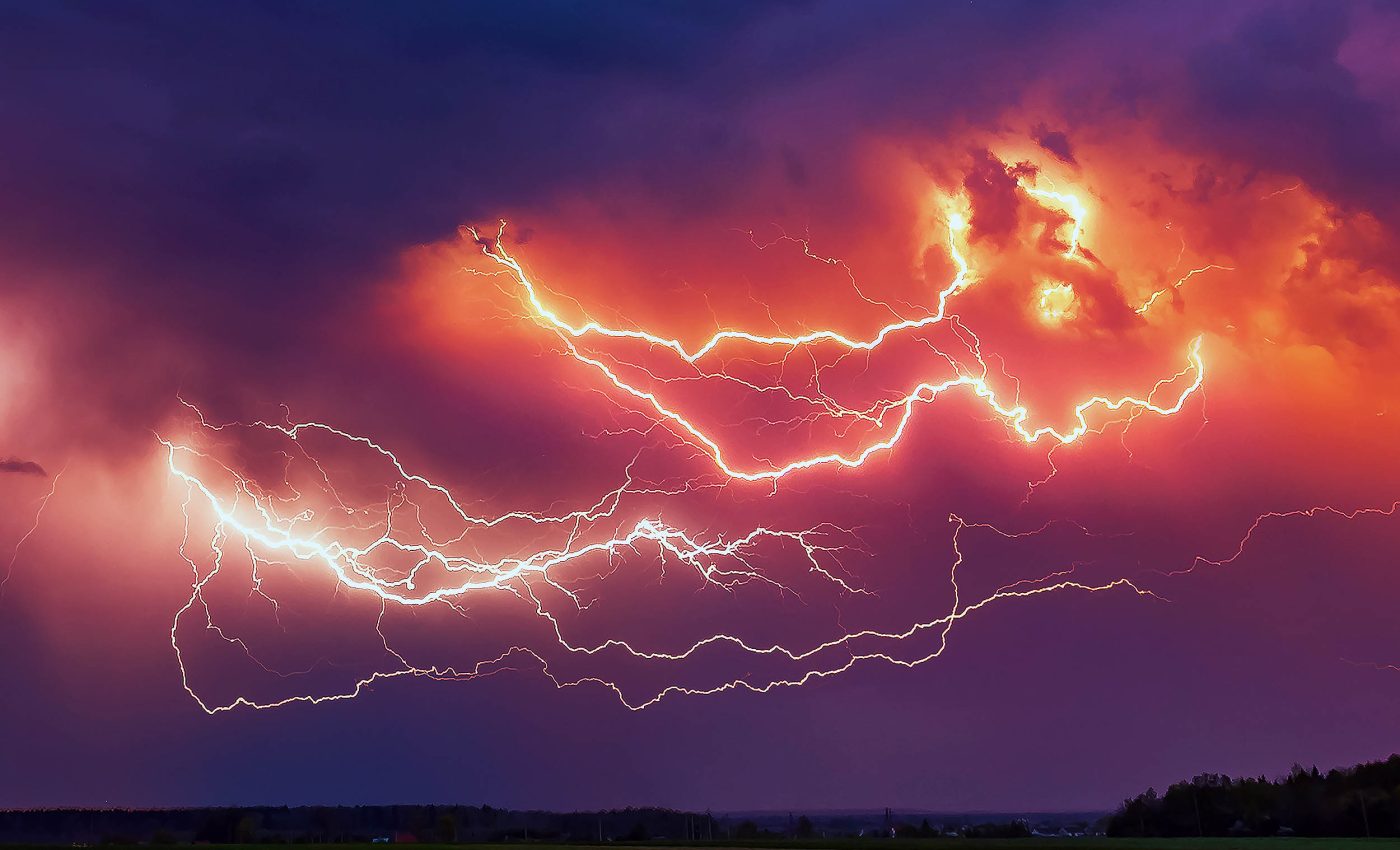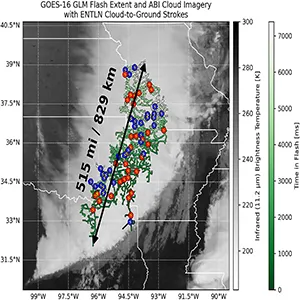
Enormous lightning 'megaflash' sets world record after spanning across five US states
A single lightning “megaflash” stretched an astonishing 515 miles across the central United States, according to a new analysis.
Experts have certified it as the longest lightning flash ever reliably measured, and the event now sits atop the global record books.
Capturing a lightning “megaflash”
Scientists use the term megaflash, a single lightning flash longer than 62 miles, for events of this scale. This record setter fits the definition and then some.
It unfolded within a mesoscale convective system, a large organized thunderstorm complex that can cover several states.
These systems build broad decks of electrified clouds where charge can spread sideways for huge distances.
Lead researcher Michael J. Peterson of the Georgia Tech Research Institute (GTRI), Severe Storms Research Center (SSRC), led the evaluation of the event.
He and colleagues documented how a single continuous flash connected distant cloud regions across the Plains.
The committee measured the horizontal extent using consistent geodesic methods and energy-weighted centroids from satellite detections.
That approach avoids overcounting overlapping flashes and keeps the measurement standards comparable over time.
Lightning megaflashes are different
Most megaflashes fan out through the trailing stratiform region, the broad rain shield that sits behind a storm’s active line region. Once there, the discharge can keep stepping along for hundreds of miles.
These environments host a deep charge reservoir, a large zone of separated electrical charge within the cloud. Horizontal layers of charge make it easier for the channel to keep going.
The record flash also produced multiple cloud-to-ground strokes along its route. Each stroke tapped the same parent channel rather than starting from scratch.
Activity can look deceptively calm when megaflashes happen. They often strike when the noisy core of the storm has moved on and the rain shield lingers.
How satellites saw the bolt
The Geostationary Lightning Mapper (GLM), a satellite instrument that detects brief lightning light pulses from orbit, recorded the flash. Its view covers the entire hemisphere continuously, which is crucial for catching rare giants.
Scientists later reprocessed the dataset with improved clustering methods that better group individual light pulses into single flashes. That pass revealed a single continuous discharge, not several look-alike flashes packed together.
This record is a case where better algorithms changed the scoreboard. It shows how detection technology shapes what we can count and compare.
Ground networks remain essential for tracking lightning, but they often miss the largest flashes that leap across gaps between sensors and radar coverage.
By contrast, a satellite’s constant, wide-angle view fills in those blind spots, revealing the full sweep of megaflashes across the Great Plains.
Giants on the Great Plains
Lines of storms often organize along cold fronts in the Plains, then spread into expansive rain shields behind the leading edge. Those shields build the ingredients that enable very long horizontal discharges.
As the updraft weakens, charge layers can stretch outward more than upward. That geometry favors lateral growth of a single, persistent channel.
The result is not a louder storm, but a farther-reaching one. Length, not loudness, is the headline for megaflashes.
Understanding that difference matters for safety and for forecasting. It explains why lightning hazards can extend far beyond the noisy heart of a storm.

Why these record flashes matter
Lightning is more than a visual spectacle, it is a key part of Earth’s global electric circuit, the planet-wide system that moves charge between the surface and the upper atmosphere.
Each megaflash helps scientists understand how this circuit operates on very large scales that were invisible until recent decades.
Extreme flashes also influence atmospheric chemistry by producing nitrogen oxides, gases that affect ozone and climate balance.
Although each event contributes only a trace amount, their size and power make them valuable for modeling storm impacts in climate simulations.
Tracking megaflashes also sharpens warning systems. As satellites reveal longer and longer events, forecasters can update safety guidance to account for lightning that travels hundreds of miles from a storm’s core.
Lightning, megaflashes, and safety
Lightning can arrive from far away when storms organize into large complexes. Distance from heavy rain alone is not a shield.
“A single strike can potentially impact a lot of people,” said Peterson, lead author of the study. His point is simple and practical.
If you see lightning or receive a credible alert, get inside a substantial building quickly. A fully enclosed, metal-topped vehicle is the next best option.
Weather records are not static, and the tools to track lightning keep improving. As archives grow, scientists expect to find other rare giants hiding in the data.
The study is published in the Bulletin of the American Meteorological Society.
—–
Like what you read? Subscribe to our newsletter for engaging articles, exclusive content, and the latest updates.
Check us out on EarthSnap, a free app brought to you by Eric Ralls and Earth.com.
—–













